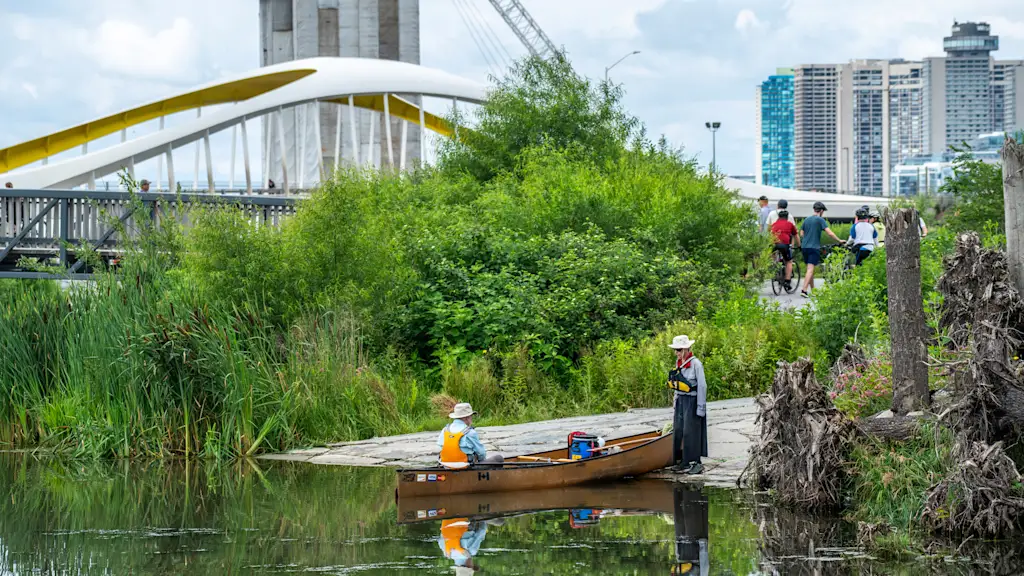
""It's incredibly transformed," says Emily Mueller De Celis, a landscape architect at the firm Michael Van Valkenburgh Associates, which won a competition to "renaturalize" the area in 2007. "Rather than walking around in and amongst oil refineries and other industry, now you are immersed in nature, walking along the banks of a river with spectacular views back to the city.""
"The scale of the $1.4 billion project, along with inevitable delays, meant that it's taken a very long time. "This is the largest infrastructure project in North America," says Mueller De Celis. The project carved out more than 1.3 million cubic meters of soil, reshaping a new mouth for the river and creating a new island where the park, called Biidaasige Park, now sits. The design helps protect adjacent areas from flooding."
A former wetlands and industrial stretch of Toronto's riverfront was filled and industrialized across the late 19th and 20th centuries, creating contaminated land and altered channels that worsened pollution and flooding. Waterfront Toronto launched a revitalization effort in the early 2000s, demolishing industrial infrastructure and investing $1.4 billion to reshape the river mouth, remove over 1.3 million cubic meters of soil, and create a new island. Biidaasige Park now occupies part of the site. The design emphasizes green infrastructure and flood protection and will accommodate a new neighborhood to be built inside the park.
Read at Fast Company
Unable to calculate read time
Collection
[
|
...
]